#not beginner friendly
Explore tagged Tumblr posts
Text
Cimanin cake
One plain yogurt
Fill the yogurt container with sugar. Thats as much as you need.
Whisk up till sugar disolves
One whole chicken egg
Vegetable oil, bout the amount of the egg
Whisk all together until homogeneous
Add cinnamon until that shit is brown. Make it that it will be noticeable. This shit is cinnamon cake not cake with cinnamon.
Sift about two cups of flour in small increments, whisking as you go to avoid clumps. Keep going until desired consistency.
It should still be liquidy but not that it falls off the whisk without whacking it against the bowl. Kinda like whipped cream consistency, to not say mayonaisse, which is closer to the actual consistency it needs to get at but that sounds gross so cream it is.
Since some eggs and some brands of yogurt have more liquid in them for reason i dont know im not a food scientist or whatever those asshole mfs that make you pay 100k for a plate with one teaspoon of sour gloop call themselves, you may have to add a little bit more flour to get that mayo consistency.
Butter up a pan and pour your mix in with the oven preheated to 180°C (if you need farenheit use google)
Bake until the knife comes out clean. Took me like 30-40 minutes when i first made it, idk i wasnt counting.
Eat hot with lemon glaze or with even more cinnamon, fuck those shits up, add marmalade or jam theyre fucking delicious bruh
2 notes
·
View notes
Text
Can't believe I'm simping over a puppet. Who looks oddly human despite 'being' a puppet. Well, it's just the demo, so maybe they'll change his design or add small details.
Also, please tell me I'm not crazy. The blocking feels off at times, like it doesn't want to register in time when you're blocking a attack. But if you just randomly press it while out of battle, it works perfectly fine. Maybe my controller is bad or something, or the blocking is just actually bad rn.
Anyway, when the full game comes out, I'm going to write fics for it ❤❤
#lies of p#marie talks#im actually not a realler big gamer#im bad at games actually#and lies of p is probably#not beginner friendly#but its fun
12 notes
·
View notes
Text



A little flannel cow!
I think her name has to be Dottie
#sewing#handmade#plushie#cow plushie#some interesting construction in this cow pattern#like. not unique but just enough different that it’s got me thinking of how I could do something like that#all in all 10/10 excellent pattern would make again#not super beginner friendly but also not difficult to make if you’ve made a plushie before
683 notes
·
View notes
Text
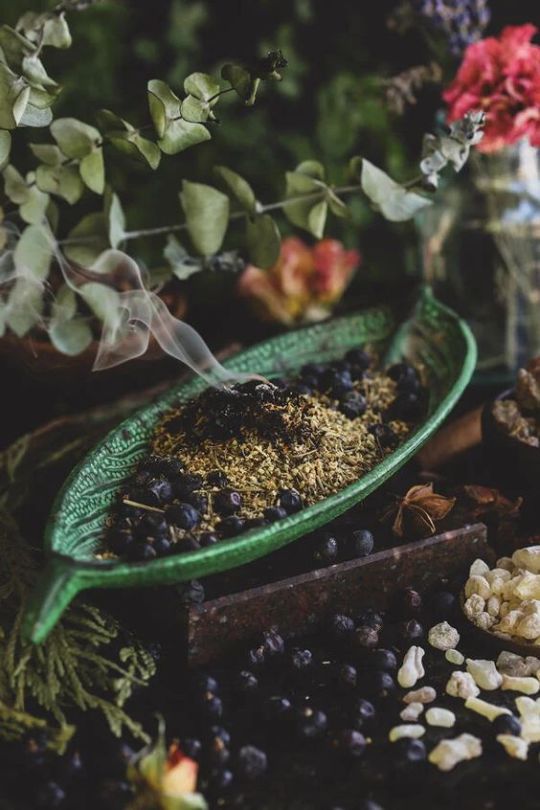

Witchcraft 101:
Cleansing vs Uncrossing vs Banishing

Alright witches. Lets dive into some witchy basics and discuss the differences between cleansing, uncrossing and banishing. This will hopefully help you differentiate between them. But.. lets be honestly if you do something like call a spell an uncrossing when "technically" doing a banishing, who cares its all in good spirit. The reason i think its good to have a difference in mind between these falls into how you handle a spell. If I'm doing an uncrossing vs a banishing i would choose different spell ingredients, maybe work with different gods, or choose a different element to work with.
Cleansing: I consider cleansings as the foundation and most basic of these. Its almost an umbrella term the other two fall under. All banishings are cleansings, but not all cleansings are a banishing. Cleansings are when you're trying clear something away. Most often people will use this term in day to day workings and general upkeep to make sure nothing has stuck to them. This would include more casual things like smoke cleansing, showering and asking the water to cleanse you, sound cleansing, etc. Its not a full spellworking or ritual, but still done with energy and intention. Sometimes you may do a cleansing and realize whatever is there, is stuck deeper then you expected. So you take the next steps and do a more "intense" cleansing like an uncrossing or banishing.
Uncrossing Spells: Uncrossing specifically refers to removing unwanted energy. Usually when discussing what is an uncrossing, I sperate it from just a cleansing by describing it as a very intense cleansing where you're trying to strip away intense and specific energy. These are more work and a step up from an everyday cleansing for more intense scenarios. This is very spirit focused; think of it as taking out the bad and putting in the good. Some types of spells I would consider an uncrossing are: removing hexes/jinx/curses, removing the evil eye, spiritual detoxes, road openers, removing any stubborn energy, removing feelings, etc. I associate uncrossings with water: it's soaking in and getting that energy out. I would choose herbs/spell ingredients that are uplifting and purifying. Think salt, rosemary, rue, and lemons.
Banishing Spells: Banishing spells remove unwanted entities, spirits or people. You can use it to get rid of very deep rooted things like habits or insecurities. Banishings are quite a strong forms of spellwork. You're really kicking something out and away from you when you do a banishing. Its connected to more deep rooted things that you're trying to remove from your life. Some types of spells I could consider a banishing: cord cutting, exorcisms, banishing a spirit attached to you, getting rid of insecurities, freezers, etc. I associate banishings with fire. Burn and gtfo. I would choose herbs that have more of a kick to them and are defensive. Think nettle, blackberry leaves, cloves, even pepper in some cases.
Please note this doesn't have to be something strict. Like i said at the beginning this is just a guide that will help you differentiate so you can tackle the spellwork as effectively as possible.
✨Stay Spooky ✨
#witchblr#pagan witch#witchcraft#witchythings#witch#the spectral cottage#spellwork#witch tips#Banishing#Cleansing#Uncrossing#Spell Tips#grimoire#book of shadows#witchy how to#baby witch#beginner friendly
2K notes
·
View notes
Text

lord help me them blocks gonna be the death of me
#blockbench#crow talks#trying to quick learn the basics#i made a pokeball#then the tutorial went too fast and cut out steps despite supposed to be beginner friendly HELP hdfhfshVGHBHSB
176 notes
·
View notes
Text

rip to bruce but if i fumbled her i would literally kill myself
#wrote this caption before trying to figure out if the artist intended for this to be a qipao or not#settled on the fact that he did (the mandarin collar sealed it) and spent 2 hour reading a brief history of them#and terminology to try and make an accurate ID but my 'ohmygof she's so fucking hot' got QUICKLY replaced with anger#like in 1930 Shanghai there were so many designs that did feature more form fitting fabric & high side slits#theres so many general gorgeous designs with the elaborate pankous and embroidery and beading that you could of taken inspiration from#and you make it more or less a unitard. you go hm close enough just to sexualize her further#like yeah she's gorgeous my caption stands but the disrespect and disregard is so... you know.#anyways. messy little ramble over. if im bruce wayne im killing myself and also thepankou(.)com has really beginner friendly posts talking#about the history of them & different (general) region styles & the use of qipaos in different media and exhibits. also a GORGEOUS wardrobe#crypt's panels#talia al ghul
251 notes
·
View notes
Text
I will probably go down now as the person who hates that artists are getting paid for their work to do commissions and I just want to repeat that this is not at all what I think.
I love seeing artists getting paid. In times of AI it's even more important that people still value actual artists. Please do commission artists with your ideas if you cannot possibly draw them yourself!
What I find a little weird is the amount of commissions at Acotar character events. Why aren't more artists participating for fun, because they want to? Like in any other fandom?? I definitely think the rather hostile environment in the Acotar sphere is not helping at all. It makes people not want to participate and share their stuff.
I obviously also don't mean that every artist is required to make art for free for every character event. Just that originally fandom is about participating FOR FUN. I don't want people to feel they have to spend a lot of money to contribute to character events either.
#thrum rambles#Tamlin Week had 0 commissions and it has one of the biggest masterlists of all these events with plenty of art!#what I liked was that it was very newbie and beginner friendly too#because i feel it can be super intimidating to post your little illustration amongst big expensive professional commissions too#fandom woes#should really change this tag to fandom wank
118 notes
·
View notes
Text
can i say smth crazy. i think gojo would be so good for your first blowjob. he’d think the lack of experience is so cute, he’s just happy to be involved.
#mercury speaks#his size isn’t beginner friendly#nor is he gonna be easy on you#but he’s enthusiastic#and cheering you on#and thumbing your tears
70 notes
·
View notes
Text
Types of divination
Please note: Not all of them are going to be here. I will be covering ones that Beginner witches can use and learn as a starting point! This also isnt a guide on how to do it, its is just some ideas and what they are.

Tarot and cards-
People who are unfamiliar with divination may believe that reading Tarot cards means "predicting the future." However, most Tarot card readers will tell you that the cards are only a guideline, and the reader is simply interpreting the likely outcome based on the forces at work right now. Consider Tarot as a tool for self-awareness and contemplation, rather than "fortune telling." Here are some simple steps to get you started reading and utilising Tarot cards in your divinatory practice.

Norse Runes-
According to Norse epic sagas, Odin created the Runes as a gift to humanity a long time ago. These sacred and holy symbols were originally etched in stone. Over time, they grew into a collection of sixteen letters, each with a metaphorical and divinatory significance. Learn how to create your own set of Runes and read what they say.

Reading tea leaves-
People have utilised many different ways of divination from the beginning of time. One of the most recognised is the practice of reading tea leaves, often known as tasseography or tasseomancy. This divination method, while not as ancient as some of the other famous and well-known methods, appears to have originated in the 17th century.

Pendulum reading-
A pendulum is one of the most basic and easy types of divination. It's as simple as asking and answering yes/no questions. Although pendulums may be purchased commercially for between $15 and $60, they are simple to create on your own. Most people use crystals or stones, but you may use any object with some weight to it. There are various methods to utilise a pendulum for divination, and you'd be amazed what you may learn from "yes" and "no" replies. The secret is to learn to ask the appropriate questions.

Osteomancy-
For thousands of years, tribes throughout the world have used bones for divination, a practice known as osteomancy. While there are several approaches, the goal is usually the same: to predict the future using the signals revealed in the bones.

Numerology-
Numerology is a discipline that many Pagan spiritual groups utilise. According to the basic concepts of numerology, numbers have a tremendous degree of spiritual and magical importance. Some numbers are more strong and powerful than others, and combinations of numbers can be created for magical purposes. In addition to magical correspondences, numerals have planetary importance.

Intuition-
Intuition is the capacity to know things without being told. Many intuitives make outstanding Tarot card readers because their ability offers them an advantage when reading cards for clients. This is sometimes known as clairsentience. Of all psychic talents, intuition may be the most frequent.

171 notes
·
View notes
Text
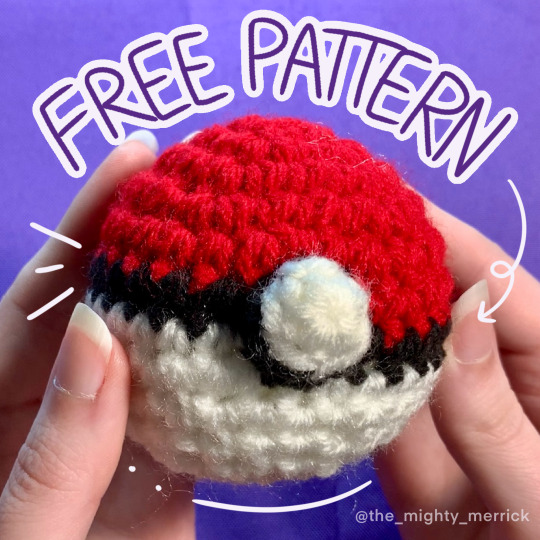
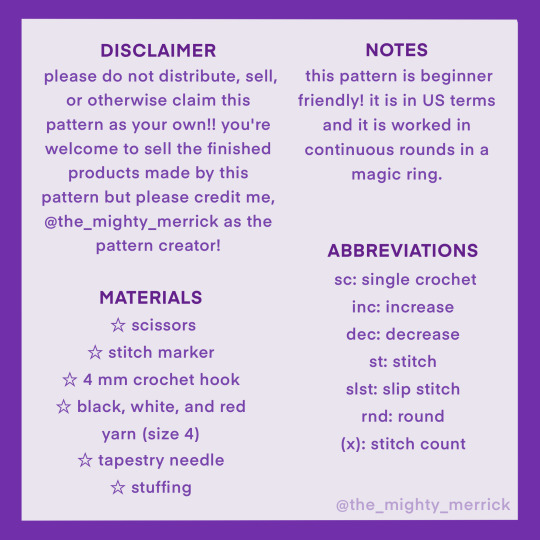

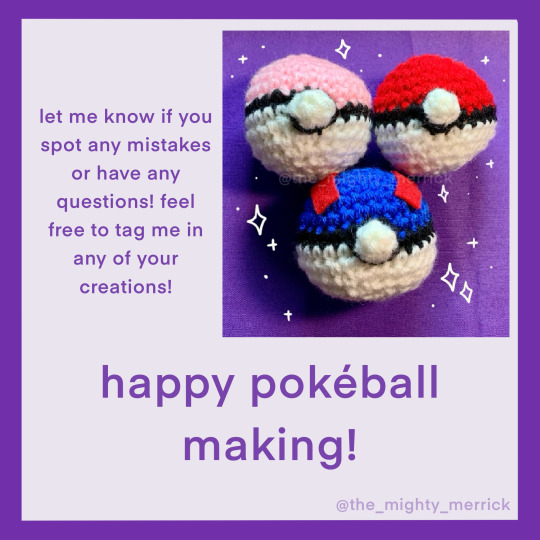
say hello to my very first pattern release!! i make these all the time and they're super quick and easy! hope you all enjoy the free pattern :) happy pokéball making!!
you can find the video tutorial here!
#crochet#crochet pattern#free crochet pattern#amigurumi#cute crochet#easy crochet#beginner friendly#crocheters of tumblr#pokémon#pokéball#pokémon crochet#fiber art#fiber crafts#crochet plush
84 notes
·
View notes
Text
Banan bread
2 bananas. Dont matter if theyre not ripe enough for other recipes out there (why the fuck do all of them go "wait for the banan to go BAD from how ripe it is. That shit gotta be BROWN" like yeah that works but come on, bruh) as long as theyre not green you're good.
Mash those bitches up, with a whisk, with a fork, in a blender, whatever, just make them into juice lmao i dont recc the blender tho, because it will add too much viscosity and you'll need to add more flour than you really need so better not.
The consistency of your banana mush should be smilar to that of whisked eggs. The banana replaces the eggs so thats why. (I made this when i was out of eggs)
Melt 3/4 of a cup of butter. Salted or unsalted dont really matter, but salted kinda works better (may be the salt idk)
Add the melted, hot butter to the banana and fold it in. Thats not whisk, love, mix it gently, maybe even change the whisk for a wooden spoon, we dont want the banans to get even MORE viscous.
Add the same amount of granulated sugar and mix gently until it disolves.
Now FLOUR. And baking powder (half a teaspoon). Sift flour in in small increments and mix it until mayo consistency (if you seen my cimanin cake recipe ya know what im on about).
Now butter up a pan and pour the mix in, into preheated over at 150°C (dont ask me farenheit, google it yaself) and check it often with a knife or those fancy sticks i dont have but know exist until it comes out clean.
Let it cool before eating. Or not, burn ya tongue if you want, idfk
1 note
·
View note
Text
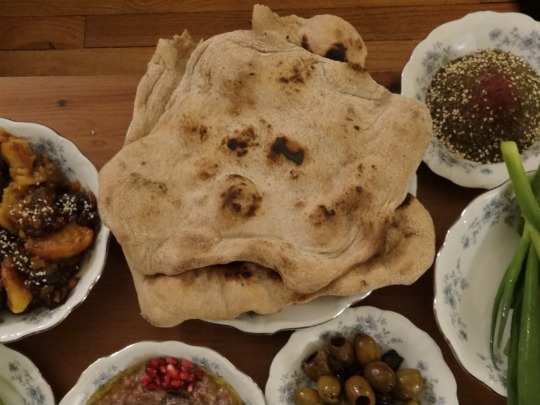
[ID: A plate of light brown bumpy flatbread with blackened spots, surrounded by za'tar and green olives. End ID]
خبز طابون / Khobz taboon (Palestinian flatbread)
Khobz taboon ("taboon bread") is a soft, chewy Palestinian flatbread. It may be eaten with olive oil and za'tar, but it is best known as the base of مسخن (musakhkhan), where it is topped with spiced aromatics and perhaps chicken.
Khobz taboon gets its name from the vessel it is traditionally cooked in—an outdoor, shallow conical oven with an opening at the top and a clay or metal cover to trap heat. Taboons may also have an opening at the side through which the fire can be stoked, especially in the east of Palestine. These ovens were historically made from a mixture of local clay and hay, but have more recently also been constructed from clay treated to be sturdier, or from metal.
A taboon is used by packing flammable material, such as hay, fabric, animal dung, wood, and charcoal, around the outside of the oven and letting it burn overnight; the fire transfers thermal energy to the clay, and to the river stones, sand, glass, or flint stones (صوان, "ṣawwān") that form the base of the oven. The ash is then brushed away, and the flattened dough is placed on the stones or stuck to the walls of the oven to cook. The clay and stones will continue to release thermal energy and cook things throughout the day. The clay and ash give a distinctive flavor to anything cooked inside the taboon, making this method a source of nostalgia for many people who have transitioned to cooking in indoor ovens.
Khobz taboon was traditionally made with whole wheat flour. Most people today use a blend of around two parts white flour to one part whole wheat, or else all white flour; they may even add milk or milk powder to ensure a very soft dough. This recipe uses a blend of flours to combine the nutty flavor of whole wheat dough with the pliancy of white dough. It also begins with an optional pre-ferment to mimic the traditional Palestinian method of including a piece of dough from the previous day's bread into each new batch (like a pâte fermentée) giving a rich and slightly sour flavor to the final bread. It calls for the use of rocks to imitate the bottom of a taboon; the rocks give the khobz its distinctive dimpled texture, and ensure that no interior pocket forms in the bread.
In the years following 2007, the siege Israel had imposed on Gaza caused a shortage of cooking gas that led to a resurgence in the use of taboons. The ovens were used to bake bread and to grill sweet potatoes during the time of their winter harvest. Meanwhile, in the West Bank, Israeli military forces repeatedly destroyed taboon ovens and assaulted villagers who tried to defend them, as Israeli settlers from nearby villages complained about the smoke that the ovens produced. Some of these ovens had been used to bake bread for entire families of 40 or more people. Palestinians continue to build, use, and defend these ovens, despite the fact that Israeli law de facto forbids Palestinians in the West Bank to build anything.
Today, Israel is deliberately targeting and destroying bakeries in refugee camps that had been supplying bread to tens of thousands of people in Gaza, continuing a long campaign of starvation of the Palestinian people.
Support Palestinian resistance by calling Elbit System's (Israel's primary weapons manufacturer) landlord; and donating to Palestine Action's bail fund.
Equipment:
A large, shallow mixing bowl, like a Moroccan qus'a
A large (12"), shallow clay cooking vessel, such as the bottom of a Moroccan tajine (one that is rated for very high temperatures), or a large baking tray
Assorted smooth river rocks of varying sizes, from 1 to 3" in diameter.
Make sure that your rocks have been thoroughly cleaned, and that they do not contain any fissures, cracks, or veins that could contain water (this water, once heated in the oven, could cause the rocks to crack open). Instead of river rocks, I used lava rocks designed for use in a clay tanoor. You just need something to provide thermal mass and give a bumpy texture.
Ingredients:
Makes 3 large breads.
For the pre-ferment:
140g whole wheat flour
1/2 tsp active dry yeast
140g water
You may also use a pâte fermentée that you already have (just adjust the ratio of white to whole wheat flour added later accordingly), or a sourdough starter. The hydration of the starter doesn't matter, since you will be adding water by eye later.
For the bread:
330g bread flour or all-purpose flour
30g whole wheat flour
5g salt
Water
If you skipped the pâte fermentée step, add 170g (rather than 30g) of wheat flour at this stage, as well as 1/2 Tbsp of active dry yeast. I have not tested the recipe this way.
Instructions:
For the pâte fermentée:
1. Mix flour and yeast in a small mixing bowl. Add water and stir to combine. Cover and leave out at room temperature for a day, or in the refrigerator for up to three days. At the end of the rising time, it should be about one and a half times its original size.
For the bread:
This recipe makes a high hydration dough that will need techniques such as slapping and folding to knead effectively.
1. Mix flours and salt in a very large, shallow mixing bowl. Add your pâte fermentée and mix to combine.
2. Add water until the flour comes together into a soft, sticky dough and continue keading. Have a bowl of water on your workstation. Every time the dough starts to stick to your hands or the sides of the bowl, wet your hands and rinse down the side of the bowl with some water. This will gradually add water to the dough.


3. You will notice the dough growing smoother and laxer. At this point, start kneading by repeatedly folding the edges of the dough in towards the center. Do this by occasionally wetting your hands, then running a hand along the side of the bowl and under the edge of the dough to unstick it from the bowl; then fold. You will get stuck less often if you try to touch the dough as lightly and briefly as possible. Every few folds, dimple the surface of the dough all over with your fingertips. You will have been kneading for about 10 minutes at this point.
The dough should become more smooth and less bumpy—you will notice it holding its shape and becoming more stretchy as gluten forms. It should form into a ball when you fold the corners in and hold its shape for a minute, but then gradually expand to take the shape of the bowl. I added about 2 1/2 cups of water total (in dry conditions) during steps 2 and 3.

4. At this point, the dough is wet enough that the slap and fold method is the best way to knead. Wet your hands and again unstick the dough from the sides of the bowl. Hook your hands under the dough and quickly pull it all up into the air; fold the hanging bottom part of the dough under, and plop the dough back down, folding it on top of the part you plopped down earlier. Give the bowl a quarter turn and repeat. Do this continually for another few minutes.
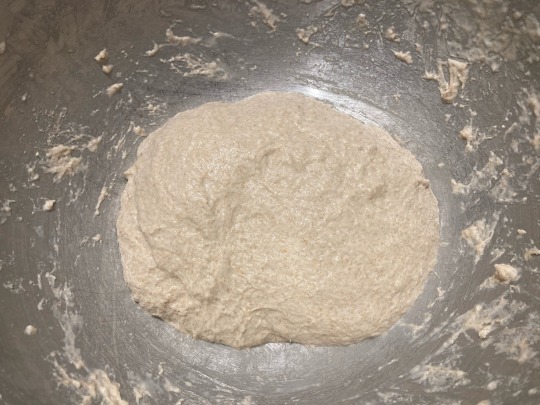
5. When the dough is very smooth and lax, smear some olive oil on the sides of the bowl and under the dough, and pat some oil on top.
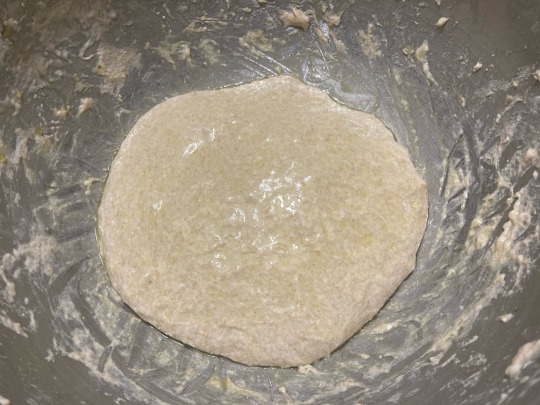
6. Cover the bowl and bulk ferment the dough at room temperature for 8 hours, or for 16-24 hours in the fridge. At the end of the rising time, you should see bubbles beginning to form on the surface of the dough.

To shape and bake:
1. Place a layer of rocks at the bottom of a clay cooking vessel or baking sheet. Put the sheet in the top third of the oven and preheat your oven to 550 °F (290 °C), or as hot as it will go.
2. Meanwhile, fold the edges of the risen dough over into the middle a few more times with damp hands. Pinch off a large piece of dough (about the size of two fists), and fold the sides over into the middle to make a neat packet.
3. Drop the packet of dough onto a heavily floured surface, and flip to flour both sides. Pat the dough flat, then throw it back and forth between your hands, catching the edge each time as you spin it through the air, like a pizza crust, to stretch it into a circle about 1/4" (1/2cm) thick with a diameter of about 10" (25cm).
You may also stretch and pat the dough out on a flat surface.

4. Remove the tray from the oven. Flip the dough circle over the back of your hand to transfer it and lay it down over the hot rocks. Re-stretch it into a circle, if necessary.
5. Place the tray back in the oven and cook for 5-7 minutes, until the top of the bread has golden brown spots. Repeat with each piece of dough, leaving the rocks in the oven for a few minutes between each one to allow them to come back up to temperature.
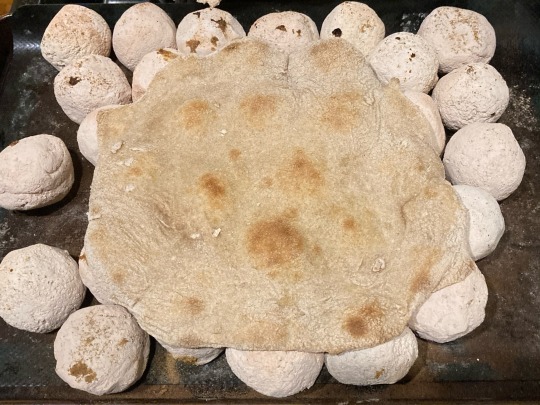
6. (Optional): Hold each flatbread directly over a gas flame for a minute or two to blacken a few spots and mimic the flavor that a wood-fired oven would give to your khobz.
You may also use a method similar to the dhungar technique to smoke your bread. Place each piece of bread one at a time into a large vessel with a closely fitting lid, alongside a small bowl. Light a piece of wood on fire and drop it into the bowl; then cover the vessel with the lid as you allow the wood to smoke for a minute or two.
#note that I do not recommend this recipe to anyone who is not experienced with making bread#I'll have another Palestinian flatbread recipe up soon which will be more beginner-friendly#Palestinian#bread#khobz#flatbread
347 notes
·
View notes
Text
Easy-To-Sew! The pattern envelope proclaims. Beginner friendly!
The actual pattern: requires installing a zipper in the crotch of the pants, cutting it to size, and constructing a fly.
72 notes
·
View notes
Text
New Murderbot Discord Server Launch
Hello, fellow Murderbot fans!
This is a post to announce that we are starting a new Discord Server where we can talk about "The Murderbot Diaries" series by Martha Wells.
There are already several excellent discord servers, big and small, in existence, but our emphasis is to be beginner-friendly, and has a relatively narrow focus on the book series.
All are welcome, including:
People who have just finished the first book and want to talk about just that book, without spoilers for subsequent books
People who have just started to read and are still confused
People who have never used Discord before and are a little worried about the protocols there
People who need to look up all these abbreviations, like 'lmao', 'artmb', 'ship', 'tmbd', etc. (I know I did...)
People who love the series and want to talk with people who are new to refresh their take
People who love tmbd and are happy to interact with newcomers
We consider our server like a hub-station for beginners (thus, named "Murderbot Transit Hub"). Find footing before joining other servers with more defined characteristics. With kind permissions by owners/moderators of other Murderbot discord servers, we have a page where you can find the descriptions and invitations to other servers, too.
There are no protocols with this new server - except
"if in disagreement, just agree to disagree - excercise tolerance and accept diverse views".
I myself am new to tmbd, Tumblr, Discord etc. (all from this year...), so, I am not a confident moderator. But I love to interact with people and talk about The Murderbot Diaries (TMBD).
Fortunately, the server is created and set up by a lot more experienced @crabs-brencil, so we are in safe hands!
31 August 2024
67 notes
·
View notes
Text
I’m making the most 2017 animation meme rn why did we stop doing those over a minute long head bob animation memes I enjoy those a lot more than the fully frame by frame story driven amvs called a meme ppl do now
#the community isn’t beginner friendly enough anymore I’m not a fan#not saying the new memes are bad of course but like. I can’t imagine how#intimidating it is to be 12 and wanting to learn animation in the community now#I was intimidated by the head bobs when I was 12 😭😭😭#animation meme
34 notes
·
View notes
Text

Hello! Voice Acting Auditions are now open! Please, we are only looking for adults! Beginner friendly!
#starscream#g1 starscream#tfa starscream#tf earthspark#tfe starscream#tfp starscream#bayverse starscream#voice actors needed#voice acting call#transformers#maccadam#casting call#beginner friendly
63 notes
·
View notes